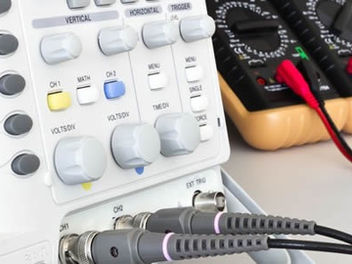Emergency Light Testing Explained: A Guide for Commercial Properties
- Guy hudson
- May 13
- 6 min read
In an emergency, when every second counts, reliable emergency lighting can save lives. Whether it's a fire, power cut, or evacuation scenario, these lights guide people to safety. But how can you be sure they’ll work when needed most? The answer lies in regular, compliant emergency light testing.
We'll explain why emergency light testing is essential, what the UK regulations require, and how commercial property owners can remain compliant, safe, and legally protected.
What Is Emergency Lighting?
Emergency lighting is a standalone lighting system designed to activate automatically during a power failure.
When the primary electrical supply is interrupted, emergency lights illuminate escape routes, exit doors, stairways, and key safety equipment. They’re crucial for preventing panic and ensuring the safe evacuation of building occupants—especially in large or complex buildings.
Why Every Commercial Property Needs Emergency Lighting
It's not just a safety feature—it's a legal and moral responsibility.
Any commercial property that is occupied by staff, customers, or the public must have appropriate emergency lighting in place. This includes:
Offices and business centres
Factories and warehouses
Shops and retail outlets
Schools and universities
Hotels and restaurants
Public buildings and community halls
Without properly installed and maintained emergency lights, evacuating during an emergency could become hazardous or even fatal.
UK Legal Framework for Emergency Lighting Compliance
Understanding the legal responsibilities helps property owners and facility managers avoid fines and protect lives.
The Regulatory Reform (Fire Safety) Order 2005
This is the primary fire safety legislation in England and Wales. It mandates that every workplace must have "adequate emergency lighting" and requires the "responsible person" to ensure systems are installed and maintained correctly.
BS 5266-1 Code of Practice
This British Standard sets out the design, installation, and maintenance requirements for emergency lighting systems. Adherence to BS 5266-1 demonstrates compliance and is often reviewed by fire authorities and insurers.
The Role of the Responsible Person
In every commercial building, there must be a designated “responsible person.” This could be an employer, building manager, facilities officer, or landlord.
Their duties include:
Ensuring emergency lighting is installed correctly
Maintaining regular testing routines
Keeping accurate records of tests and inspections
Taking corrective action when faults are identified
Failing to perform these duties can lead to enforcement actions, including substantial fines or prosecution.
Types of Emergency Lighting Explained
Understanding the different types of emergency lighting helps in choosing the right setup and testing protocol.
Maintained Lighting
These lights are on at all times and switch to battery power during a power cut. Ideal for areas in constant use like corridors in cinemas or hotels.
Non-Maintained Lighting
They remain off during normal conditions and activate only during a power failure. These are common in offices, storage rooms, and standard commercial environments.
Combined Emergency Luminaires
These feature both maintained and non-maintained components within the same unit, offering flexible coverage for mixed-use spaces.
Key Locations That Must Have Emergency Lighting
To comply with regulations and ensure effective evacuation, emergency lighting must be installed in:
All exit routes
Stairwells
Lift areas
Fire alarm call points
Firefighting equipment locations (e.g., extinguishers, hose reels)
Plant rooms and switch rooms
Toilets (especially for the disabled)
How Often Should Emergency Lighting Be Tested?
Emergency lighting must be tested regularly, and the frequency is defined by both UK law and British Standards.
Daily Visual Inspection (for self-contained systems)
A quick check to ensure charging indicators are operational. Typically done by the facility manager or security staff.
Monthly Functional Test
A short test to confirm each emergency light works correctly. This is a simulated power failure, lasting a few seconds to one minute.
Annual Full Duration Test
This simulates a real emergency by cutting mains power for the full rated duration (usually 3 hours). The lights must remain on throughout. This test must be carried out by a competent person and documented.
Emergency Light Testing Step-by-Step
Here’s what to expect when conducting tests—or what professionals will perform on your behalf.
1. Prepare the Area
Choose a safe time to test. Inform occupants, especially in 24/7 facilities. Make sure no work will be disrupted.
2. Simulate a Power Cut
This is done using a key switch or isolating the circuit. Each emergency light must come on immediately and clearly illuminate its designated area.
3. Inspect Functionality
Check for dim lighting, flickering, or total failure. Record any issues.
4. Allow Full Discharge (Annual Test)
Ensure lights remain operational for the full duration. Note any that fail before time.
5. Restore Power and Recharge
Turn mains back on and confirm charging indicators are active. Batteries should be left to recharge fully.
6. Record Results
Document every test in the fire safety logbook, including pass/fail results, duration, and any corrective action taken.
How Long Should Emergency Lights Stay On?
The British Standard BS 5266-1 recommends a minimum duration of 3 hours for all emergency lights in commercial buildings.
This duration ensures there’s sufficient time for a safe evacuation, for emergency responders to arrive, and for essential systems to shut down or stabilise if needed.
What Should You Record in Your Emergency Lighting Logbook?
Accurate records are vital for demonstrating compliance to fire authorities and insurers. Include the following:
Date and time of the test
Areas tested
Lights inspected
Duration of test (monthly or annual)
Pass or fail status for each light
Name of the tester or engineer
Details of any remedial action required
Common Emergency Lighting Faults
Regular testing helps uncover problems before they become life-threatening.
Battery Failure
If the battery won’t hold a charge, the light won’t stay on during an outage. This is the most frequent fault.
Bulb/LED Burnout
Even energy-efficient LEDs degrade over time. Dim or failed lights must be replaced immediately.
Wiring Issues
Loose connections, corroded terminals, or damage from rodents or moisture can all lead to system failure.
Incorrect Installation
Sometimes, emergency lighting is positioned poorly—leaving parts of the escape route in darkness.
Emergency Lighting Maintenance Tips
Beyond testing, regular maintenance helps prevent failure and ensures longevity.
Clean lenses and fittings to maximise light output
Replace old or damaged units
Perform battery capacity checks
Upgrade outdated systems to energy-efficient LEDs
Check positioning and compliance with layout drawings
Benefits of Professional Emergency Light Testing
While monthly tests can be done in-house, annual tests must be handled by a qualified provider.
Here’s why outsourcing is recommended:
Ensures full compliance with BS 5266-1
Detects hidden faults with professional-grade equipment
Reduces liability in case of incident
Frees up internal resources
Provides certified test reports
At Global Compliance UK, we provide detailed assessments and documentation that satisfy insurers, auditors, and enforcement officers alike.
Emergency Lighting & Fire Safety Integration
Emergency lighting doesn’t work in isolation—it’s part of a larger fire safety ecosystem.
It should be coordinated with:
Fire alarms
Fire extinguishers
Evacuation plans
Fire doors and signage
Smoke ventilation systems
A well-integrated approach increases the chance of a safe and efficient evacuation during emergencies.
Upgrading Emergency Lighting Systems: What to Consider
If your system is over 10 years old, or you’re still using halogen or fluorescent units, it’s time to consider upgrading.
Advantages of LED Emergency Lighting:
Uses up to 80% less energy
Longer service life (up to 50,000 hours)
Lower maintenance costs
Brighter and more effective illumination
Consider Adding:
Self-test units – Perform automatic diagnostics
Central battery systems – Better for large buildings
Smart monitoring platforms – Real-time alerts and logs
Frequently Asked Questions (FAQs)
Is emergency lighting mandatory in all UK commercial buildings?
Yes. The Fire Safety Order 2005 and BS 5266-1 make emergency lighting compulsory in all non-domestic premises.
What happens if I fail to test my emergency lighting?
You could face enforcement notices, invalid insurance, prosecution, and increased liability if an accident occurs.
Do I need to test during daylight hours?
Not necessarily, but testing during hours of low occupancy is best to avoid disruption and allow observation of the lighting's effectiveness.
Why Work With Global Compliance UK?
At Global Compliance UK, we understand the importance of safety and compliance. With our expertise in fire safety, electrical compliance, and emergency lighting systems, we help ensure:
Full legal compliance with the Fire Safety Order and BS 5266-1
Minimal disruption during inspections
Transparent reporting and actionable results
Peace of mind knowing your premises are protected
We work across all sectors—from offices and retail to industrial and healthcare settings.
Conclusion
If you haven’t tested your emergency lighting recently—or if you’re unsure whether your system is legally compliant—now is the time to act. Don’t leave the safety of your staff and visitors to chance.
Call us today on 0330 100 5341 or email info@global-compliance.co.uk to arrange a professional emergency lighting inspection or annual test.
Let us help you keep your people safe, your building compliant, and your business protected.



























Comments